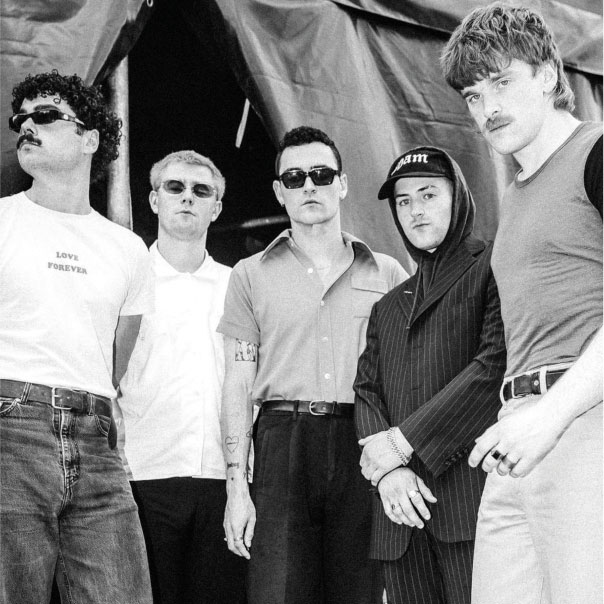Copacetic is an arcane expression that often crops up in 1980s movies, meaning “in good order”. Usually uttered by a flaxen-haired Californian teen as they leap into a bitchin’ Camaro and hightail it to a wild party with Molly Ringwald and Judd Nelson. As we emerge into the spring sunshine, I find myself re-exploring an incredible decade for music. Pop’s best, certainly. Best for music ever? Now that is up for debate.
The 1980s began on a sombre note. I was only eleven, but remember it being a pretty gloomy time. I was at a local prep school, which in retrospect I hated just about every day. Nationally, the UK was in a mess, with sky-high unemployment and raging inflation (sounds familiar?) Music and culture reflected the doldrums, and although I appreciated the dystopian electronica of Gary Numan, the Human League and Ultravox, they seem a lot warmer and more appealing now. Are ‘Friends’ Electric is a fantastic song, but you can’t call it feelgood. Likewise, Ghost Town by The Specials, which came out as riots erupted across the country. John Lennon was dead, Britannia wasn’t really ruling – we needed something to come along and cheer us up.
Out went grey and dull, in came colour and a non-stop party feel
And then came ’80s pop. Propelled by the New Romantics, themselves young punk fans desperate for glamour and good times. Spandau Ballet from North London, Duran Duran from Birmingham; not forgetting the burgeoning synth sounds of Orchestral Manoeuvres in the Dark, Heaven 17 and Depeche Mode. As with rock ‘n’ roll in the 1950s and the Beatles’ arrival in the 1960s, the explosion of early ’80s pop music was a multi-coloured firework display bursting across the airwaves. Us Gen-Xers hoovered it up, fed on a diet of daytime Radio 1, the Sunday Top 40 countdown and weekly TV show Top of the Pops.
Where things really went pop mad was some time in 1982. Perhaps the roots were already there in the overhaul of Top of the Pops the year before. It had been a fairly drab affair, with a live BBC orchestra (who contractually had to play with EVERY band) and an uninspired studio set through which distracted teenagers wandered, mugging at the camera. The revamp brought in producer Michael Hurll, a no-nonsense Maggie Thatcher-type who bossed everyone around like a middle-class headmaster. But he was the kick in the pants that TOTP and the decade badly needed. Out went grey and dull, in came colour, professional dancers and a non-stop party feel. And all those BALLOONS. If any image evokes the 1980s at its greatest and most excessive, it’s crowds of flush-faced teens in plastic hats waving little TOTP flags and biffing balloons about as anyone from Adam Ant to Madonna, The Cure or Kool & the Gang mimed back at them from the stage.
For all the glitz and sparkle, the decade was still a deeply troubled time. The Falklands War in Spring 1982, national miners’ strike of 1984-5 and constant threat of nuclear war hung ominously over our heads. And the Cold War was echoed sometimes surprisingly in the lyrics of pop acts. Level 42 sang of a soldier confiding, “I need to love someone/ Before they drop the atom bomb”, Duran Duran tell an ex-lover “You’re about as easy as a nuclear war” in Is There Something I Should Know? and Frankie Goes to Hollywood’s hi-NRG orchestral epic Two Tribes is all about the zero-sum game of mutually assured destruction.
Teenage boys like me weren’t usually obsessed by Duran, Wham! or the Spands – they were “for girls” – but it didn’t stop us from listening to them on the quiet. And if we got sick of what the major record labels were churning out, we could dip into the parallel stream of alternative music. Indie came alive in the ’80s, fuelled partly in opposition to music’s increasingly corporate nature. We might have been absorbing mainstream radio by day, but our ears were equally tuned to the off-kilter delights of John Peel’s late-night show, where we’d get blown away by Japanese noisecore, ’50s-apeing psychobilly and industrial insanity that sounded like a washing machine being dismantled. And probably was.
1980s music exerts a magnet-like attraction on me. Of course nostalgia plays a big part, but why am I not pulled towards late ’70s disco or mid-’90s Britpop? The 1980s have taken on a space in my mind – and it seems, the collective consciousness – that glows neon-bright. In lockdown I wrote a time-travel TV series going back to Los Angeles in the summer of 1987, and more recently a suburban fantasy drama set in the UK in 1982. This article’s own deep dive was inspired by a friend telling me her student-aged daughter regularly asks her what the ’80s were like. And sits in wide-eyed wonder as Mum regales her with stories.
Getting older can colour the past sepia, but the 1980s still stand as an incredibly exciting time to grow up. Pop was bonkers and brilliant, indie was rising from the underground and hip-hop was busting down the wall like Run-DMC in the Walk This Way video. Before you knew it, we were hurtling towards the glowstick-psychedelia of acid house, warehouse rave and late-decade dance culture. Yes, kids. The 1980s were copacetic.
Will Stubbs is a screenwriter and TV commercials writer. Music is his first love




